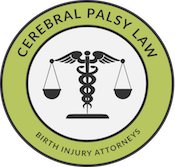Treating Hypoxic Ischemic Encephalopathy (HIE) with Hypothermia Treatment (Brain Cooling)
Birth Asphyxia and Hypothermia Treatment Lawyers in Michigan
Hypoxic ischemic encephalopathy (HIE) is a dangerous neonatal brain injury that often results in lifelong injuries and disabilities and, in the worst cases, infant death. Because the injuries and risks associated with HIE are so severe, it is crucial for medical professionals to quickly and accurately diagnose the neonatal brain injury and begin treatment. Currently, the only known treatment for hypoxic ischemic encephalopathy is the hypothermia treatment (also known as brain cooling). Throughout this page, our Michigan HIE and birth injury attorneys will explain hypoxic ischemic encephalopathy and the hypothermia treatment in more detail.
We encourage you to reach out to our Michigan hypoxic ischemic encephalopathy (HIE) and hypothermia treatment lawyers with any questions or case inquiries. Our legal team will provide you with a free case review, determine the cause of your loved one’s injuries, and inform you of your legal options. To contact our law firm, please call us toll-free at (888) 592-1857, complete this online contact form, or press the following button.
What Is Hypoxic Ischemic Encephalopathy (HIE)?
Hypoxic ischemic encephalopathy (HIE) is the most common type of neonatal brain injury caused by oxygen deprivation. Also referred to as neonatal encephalopathy (NE), intrapartum asphyxia, or birth asphyxia, this dangerous brain injury is the result of two conditions—hypoxia, which refers to a shortage of oxygen in the tissues, and ischemia, which refers to the decreased flow of oxygen to the fetus. Hypoxic ischemic encephalopathy generally occurs around the time of labor and delivery, and it has several possible causes related fetal oxygen deprivation.
Hypoxic ischemic encephalopathy permanently damages the baby’s brain, and the resultant injuries and disabilities are often severe and lifelong. They may include fetal death, cerebral palsy (CP), seizure disorders and epilepsy, periventricular leukomalacia (PVL), movement challenges, intellectual and developmental disabilities (I/DD), learning disabilities, and other neurodevelopmental impairments.
What Is Hypothermia Treatment?
Currently, hypothermia treatment is the only procedure known to improve the brain damage caused by hypoxic ischemic encephalopathy. The treatment consists of cooling a newborn baby’s core temperature down to roughly 91 degrees Fahrenheit for around 72 hours. A lowered body temperature slows the baby’s metabolic rate, ultimately allowing a prolonged period of cell recovery. Without hypothermia treatment, normal blood flow restores injured cells too quickly and ultimately results in permanent brain damage.
What Are the Causes and Risk Factors for Hypoxic Ischemic Encephalopathy (HIE)?
Several oxygen-depriving incidents can occur around the time of birth and result in hypoxic ischemic encephalopathy. Events causing hypoxic ischemic encephalopathy can take just before birth, when medical professionals fail to detect and address a sign or complication. In other scenarios, complications arise during delivery and medical professionals fail to order and perform an emergency C-section before the baby suffers oxygen deprivation. Other times, medical professionals fail to properly care for the baby’s respiration in the NICU, thereby causing oxygen deprivation.
In this section, we’ll list some of the many causes and risk factors for hypoxic ischemic encephalopathy. When a medical professional fails to detect, diagnose, treat, prevent, or manage one or more of these complications, it is medical negligence. When negligence leads to an injury to the mother or child, it is medical malpractice.
A few oxygen-depriving conditions and complications that can cause hypoxic ischemic encephalopathy include the following:
- Premature birth
- Delayed emergency C-section (as in cases of fetal distress signals)
- Premature rupture of the membranes (PROM)
- Uterine rupture
- Oligohydramnios
- Placental abruption
- Postmaturity syndrome (from post term pregnancies)
- Preeclampsia
- Umbilical cord complications—nuchal cords, umbilical cord compression and prolapse, short chords, or true knots
- Labor that fails to progress
- Placenta previa
- Fetal stroke
- Maternal infections and other health issues
- Infant illnesses
- Anesthesia mistakes
- Strong contractions and uterine hyperstimulation (from Pitocin or Cytotec)
- Intracranial hemorrhages (brain bleeds)
To read more about causes and risk factors for HIE, visit this page.
Hypoxic Ischemic Encephalopathy: Signs, Symptoms, and Diagnosis
 In order to prevent the likelihood of prolonged fetal oxygen deprivation and permanent infant brain damage, it is crucial that medical professionals identify any signs of hypoxic ischemic encephalopathy as soon as possible. Hypothermia treatment must begin within six hours of the hypoxic ischemic event, and the sooner HIE is detected and diagnosed, the less likely the child will sustain severe and/or permanent brain damage.
In order to prevent the likelihood of prolonged fetal oxygen deprivation and permanent infant brain damage, it is crucial that medical professionals identify any signs of hypoxic ischemic encephalopathy as soon as possible. Hypothermia treatment must begin within six hours of the hypoxic ischemic event, and the sooner HIE is detected and diagnosed, the less likely the child will sustain severe and/or permanent brain damage.
Clinical signs used to detect and diagnose hypoxic ischemic encephalopathy include:
- Abnormally low muscle tone (hypotonia) and limpness in the baby
- Organ malfunctions
- Abnormal fetal heart tracings during delivery
- Low Apgar scores for more than five minutes (Apgar scores evaluate a newborn’s overall health status within the first few minutes of life, assessing factors including complexion, pulse, muscle tone, reflexes, and breathing)
- The need for infant resuscitation any time after delivery
- Mixed acidemia or profound metabolic acidemia in the umbilical cord blood sample (low pH readings in the blood indicate that a hypoxic ischemic event occurred)
- Feeding, swallowing, or sucking challenges
- Coma
- Seizures (infant seizures within the first 24 to 48 hours after delivery generally indicate a hypoxic ischemic event during birth, while infant seizures in the NICU generally indicate that the hypoxic ischemic event took place after delivery)
- The absence of brain stem reflexes
The presence of any of the aforementioned signs necessitates the performance of diagnostic tests. In order to diagnose hypoxic ischemic encephalopathy (HIE), medical professionals should run tests including CT scans, MRIs, PET scans, arterial blood gas tests, EEGs, blood glucose tests, and ultrasounds.
Hypothermia Treatment (Brain Cooling) and Hypoxic Ischemic Encephalopathy (HIE)
 Only babies diagnosed with hypoxic ischemic encephalopathy are eligible for hypothermia treatment. Therefore, the faster HIE is diagnosed, the sooner the newborn will receive hypothermia treatment. Babies that receive hypothermia treatment right away are likelier to experience normal, healthy brain development and function. The failure to quickly and accurately detect and diagnose HIE is an instance of medical malpractice that often leads to cerebral palsy (CP), periventricular leukomalacia (PVL), infant brain damage, and other neurodevelopmental disabilities. Additionally, the failure to offer and/or perform hypothermia treatment on a baby with hypoxic ischemic encephalopathy is an instance of medical malpractice.
Only babies diagnosed with hypoxic ischemic encephalopathy are eligible for hypothermia treatment. Therefore, the faster HIE is diagnosed, the sooner the newborn will receive hypothermia treatment. Babies that receive hypothermia treatment right away are likelier to experience normal, healthy brain development and function. The failure to quickly and accurately detect and diagnose HIE is an instance of medical malpractice that often leads to cerebral palsy (CP), periventricular leukomalacia (PVL), infant brain damage, and other neurodevelopmental disabilities. Additionally, the failure to offer and/or perform hypothermia treatment on a baby with hypoxic ischemic encephalopathy is an instance of medical malpractice.
What Are the Indications for Hypothermia Treatment?
Eligibility requirements for hypothermia treatment slightly vary from hospital to hospital, but the requirements listed below are generally used to determine whether or not a baby is eligible for the treatment:
- The infant must be older than 36 gestational weeks
- A neurological test must indicate the presence of seizures or neonatal encephalopathy
- The hypoxic ischemic event must have occurred within a six hour time frame of the onset of hypothermia treatment
- Umbilical cord arterial blood tests must indicate that the pH is less than seven or that the base deficit is sixteen or more
- If base deficit is 10-15.9, pH is 7.01-7.15, or blood gas samples aren’t available, the following requirements must be met:
- Either a ten minute Apgar score of five or less or the baby requires the aid of a ventilator to breathe for longer than ten minutes after birth
- A sudden emergency event during labor and delivery—these may include umbilical cord prolapse or tearing of the cord, uterine rupture, abnormal fetal heart tracings, maternal trauma, hemorrhages, or cardio-respiratory arrest.
- If base deficit is 10-15.9, pH is 7.01-7.15, or blood gas samples aren’t available, the following requirements must be met:
Video: Treating Cerebral Palsy and HIE with Body Cooling / Hypothermia Treatment
Legal Help for Hypoxic Ischemic Encephalopathy (HIE) and Hypothermia Treatment
Michigan Birth Injury Attorneys Handling Birth Injury, Hypoxic Ischemic Encephalopathy (HIE) and Hypothermia Treatment Cases
 If you believe your loved one has a permanent injury or disability from a medical mistake related to hypoxic ischemic encephalopathy (HIE) and hypothermia treatment, we encourage you to reach out with your questions, concerns, or case inquiries. Our birth injury team will provide you with a free legal consultation and inform you of your legal options. Securing compensation from a medical malpractice lawsuit will allow you and your family to more easily afford treatment, therapy, health care, education, transportation, equipment, and other important lifestyle resources.
If you believe your loved one has a permanent injury or disability from a medical mistake related to hypoxic ischemic encephalopathy (HIE) and hypothermia treatment, we encourage you to reach out with your questions, concerns, or case inquiries. Our birth injury team will provide you with a free legal consultation and inform you of your legal options. Securing compensation from a medical malpractice lawsuit will allow you and your family to more easily afford treatment, therapy, health care, education, transportation, equipment, and other important lifestyle resources.
To contact our hypoxic ischemic encephalopathy (HIE) and hypothermia treatment lawyers, please call us toll-free at (888) 592-1857, complete this online contact form, or press the following button.
Additional Reading
- Information on Hypoxic Ischemic Encephalopathy (HIE) & Birth Injury
- Michigan Cerebral Palsy Attorneys:
- Blogs:
